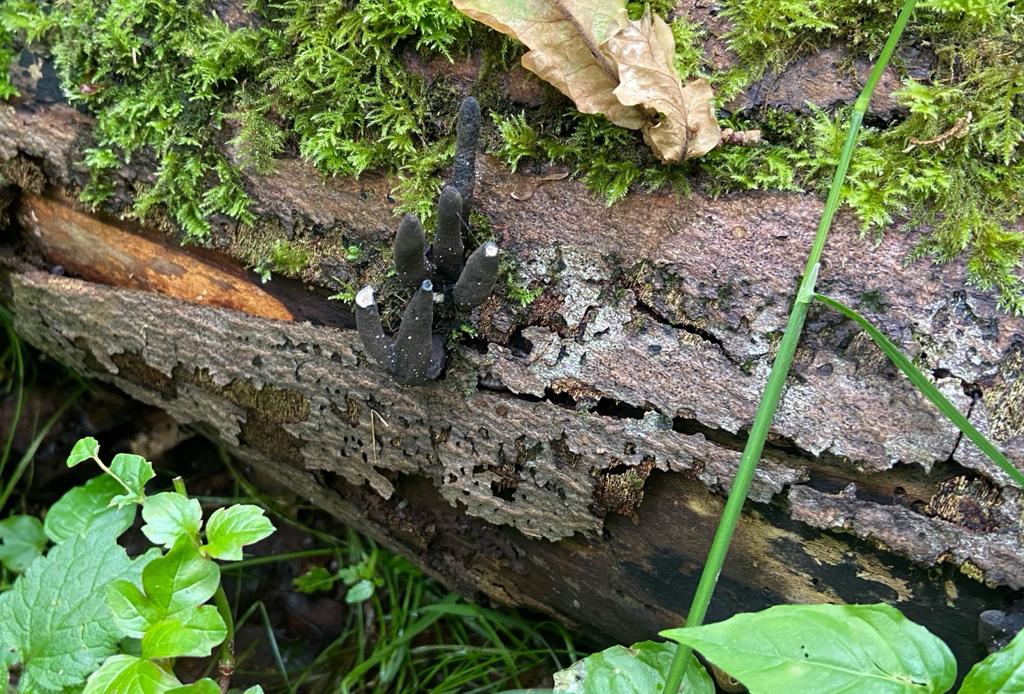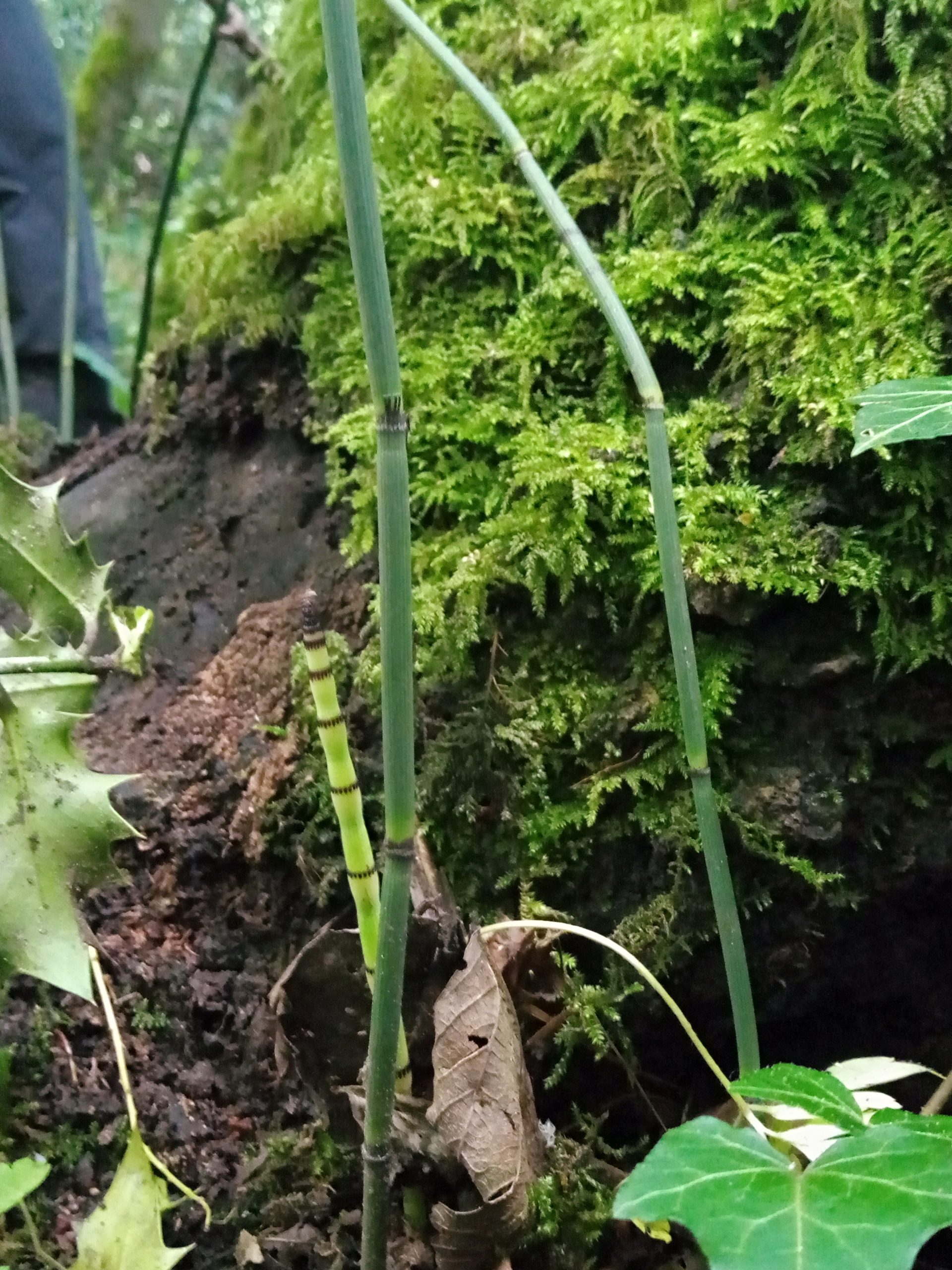Spring Wood is one of 5 named woods in the Nidd Gorge between Nidd Viaduct and Knaresborough Low Bridge. Spring Wood is on the southern bank opposite Scotton Banks and, due to its position, is seldom visited. It comprises a large slope with terraces formed by the underlying magnesian limestone from which the numerous small flushes and springs emanate. These, and the ancient woodland itself, provide much botanical interest. In comparison, the northern (Scotton) bank is classed as broadleaved woodland, and includes stands of conifers planted in the 1960s.
14 members gathered to explore this less frequented, of the Nidd Gorge. Fortunately we were able to benefit from Kevin’s wide knowledge of the wood. Without our leader we would have no doubt missed a number of species and quickly found our feet encased in mud in areas where mineral springs emerge! We stopped close to a mineral spring head, though not as close as Alastair, see photo! Here Kevin told us how a small group of mosses actively promote the deposition of calcium carbonate in the form of tufa. Deposits of calcium carbonate form around the stems of mosses growing alongside the emerging mineral water. Palustriella commutata, Curled Hook-moss, is one of these species, and the stems had an unexpected, crunchy feel (see photo).
We followed small paths winding down to the river, often partially blocked by fallen and decaying trees. Without the benefit of Alastair’s sharp eyes we might have missed the numerous fungi species he spotted, such as Dead Man’s Fingers, Honey Fungus and Fairy Inkcap. At 10 years old, Alastair is observant and knowledgeable, how fortunate we would be if he could become the HDNS Mycology Recorder.
Throughout our afternoon we saw many Indicator Species of Ancient Woodland such as Sanicle, Opposite-leaved golden-saxifrage, faded Bluebells, and Yellow Archangel with leaves completely green. Also, the nationally uncommon Thin-spiked Wood Sedge, was seen growing in the same areas as Wood Sedge, but carpeting some of the limestone flushes.
Alongside the Nidd Kevin showed us Rough Horsetail, also known as Dutch Rush, Equisetum hyemale, at its only site in the Harrogate area (the only other colony occurs near to Ripon). This is an uncommon member of the Horsetail family. The reference to ‘Dutch’ refers to the former importation of these plants from the Low Countries. Silica crystals are embedded in the stems giving a coarse, rough texture and made it very useful as a scourer for pots and pans. Close by, Kevin was very pleased to spot Wood Barley for the first time in this section of the Nidd. To quote Kevin ‘Hordelymus europaeus is a perennial herb of woods and copses on calcareous soils, especially in sheltered beech woodlands and along medieval boundary banks and old hedgerows’. It is a very rare plant in our area and currently only known from Birkham Wood, a few miles downstream, where Kevin found it a few years ago. Garden escapes were also much in evidence along the riverbank including Coralroot, Pink Purslane, Dame’s Violet and, of course, Himalayan Balsam.
Thank you Kevin, for leading this meeting, and for your input into this report.
Kerry Morrison




